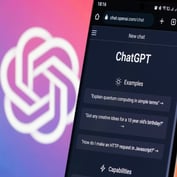What You Need to Know
- Lofton says that, by the time a rep has called a good prospect, that good prospect has seen the PDFs.
- He believes there is no time these days for the rep to have a long conversation about the needs of that prospect.
- His solution: Use an AI-based system that knows what the prospect should hear.
The past two years sales and service has shifted from in-person touchpoints to online, self-service or virtual selling.
That means more customer conversations than ever are starting virtually, via a call center process, but sales leaders must be able to make the most of every single conversation, consistently.
In this new “WFH” — work from home — environment, top sellers who want to stay ahead of the competition and hit their targets need to be able to access the most timely, relevant, and impactful content.
Seller activation is one of the primary responsibilities of sales enablement.
It’s the outcome of an ongoing strategy to maximize revenue per rep by ensuring they convey the right concept using the right content throughout each stage of the buying process.
Activating sellers means powering them up with content, yes, but also with the knowledge they need to nurture and close deals.
It’s a process that should be baked into their sales enablement program to boost productivity across your sales organization, in the most efficient way.
For example, when you produce new sales decks, there should also be supporting assets that define its purpose and show how and when to deploy them, such as:
- Corresponding talk tracks.
- An intent video describing the best way to use the sales deck.
- Best practices examples.
- A win story — what a win looks like.
The relevance after “Hello,” for even your newest sales reps, is that, by using AI generated opening statements and personalized talk tracks, you can:
- Reduce the ramp up time for the new reps.
- Reduce turnover of new reps. (Who will be intimidated by not being perceived as competent by the prospects they call.)
- Increase the confidence of both your new reps and your most experienced reps, by building the trust needed for the prospect to buy.
This way, your reps are armed with all the information they need to deliver the perfect pitch.
“The Field” Withered
Thirty years ago, sales managers would “ride with the reps” to know what was happening in the field.
CRMs were invented to create a record of what was happening “in the field.”
Twenty years ago, the internet started the transition that has begun to dry up “the field.”
The sales rep is no longer the only broker of the product information.
Even before COVID induced a switch to work from home, prospects were not welcoming a visit from sales reps to tell them about a product that some of them knew more about that the rep.
The rep’s website now has PDF downloads, and product demo videos. Those materials have already introduced prospects to the company’s products, long before the rep even knew the prospects were looking.
Buyers today are over 60% through their purchase journey before they will take a call with a sales rep.
There are no more “quiet deals,” where the skill of a salesperson could close an order because the prospect did not know the alternatives.
Fifteen years ago, prospects would “suffer through” the rep’s PowerPoint presentations. Now PowerPoint presentations are valuable only, in webinars to structure the delivery of a generalized message.
Prospects have read your PDFs – and looked briefly at the websites of your competitors. When you are lucky enough to have a prospect answer the phone, don’t dare ask, “Can I have 15 minutes to better understand your needs?”









 August 03, 2022 at 05:59 AM
August 03, 2022 at 05:59 AM









 Lloyd Lofton is the founder of Power Behind the Sales and the author of
Lloyd Lofton is the founder of Power Behind the Sales and the author of